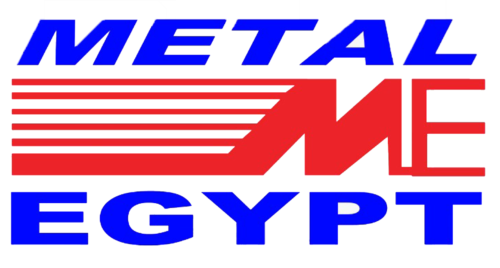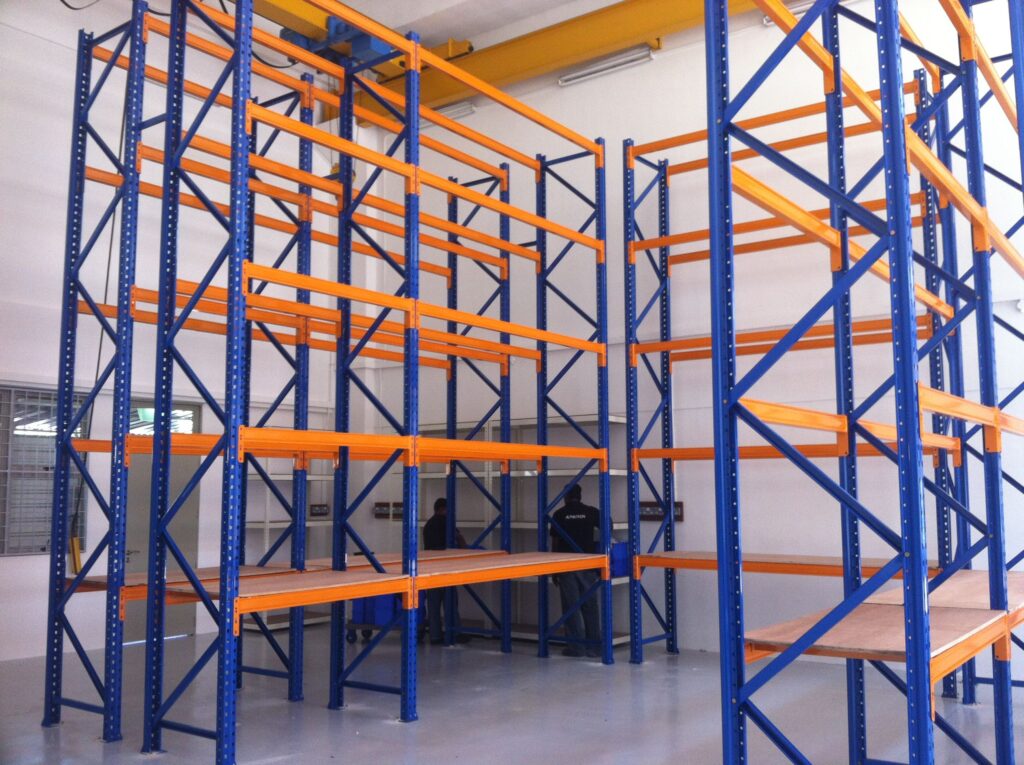warehouse racking system, are essential components of modern warehousing and logistics operations. They provide organized and efficient storage solutions for palletized goods, maximizing space utilization and facilitating easy access to inventory.
Pallet storage racks consist of upright frames and horizontal beams that form shelving levels. These racks are designed to support and store pallets, which are commonly used to transport and store goods in bulk. we made The racks from durable materials such as steel to ensure stability and strength.
types of warehouse racking system
The choice of pallet storage rack system depends on various factors, including the type of goods being stored, inventory turnover, warehouse space, and handling equipment available. Warehouse managers need to consider factors like accessibility, load capacity, space utilization, and inventory rotation requirements when selecting the appropriate racking system for their specific needs.
Wide aisle
Wide aisle racks, also known as wide-span or wide-aisle pallet racking, are a type of pallet storage rack system that features wider aisles between the rack rows. These racks are designed to accommodate standard forklifts or other material handling equipment to move within the aisles for loading and unloading pallets.
The main characteristic of wide aisle racks is the generous space provided between the racks, typically ranging from 2.4 to 3.7 meters or more. This increased aisle width allows for easy maneuverability of forklifts and provides flexibility in handling various pallet sizes and load weights.
Wide aisle racks advantages:
- Accessibility: The wider aisles provide ample space for forklifts to maneuver and access pallets from any position within the rack system. This allows for efficient inventory retrieval and restocking, minimizing handling time.
- Versatility: Wide aisle racks can accommodate a variety of pallet sizes and goods. The open design allows for easy adjustment of beam levels to accommodate changing inventory needs.
- Flexibility: The wider aisles provide sufficient space for workers to perform inventory checks, inspections, and maintenance tasks within the rack system.
- Safety: The increased aisle width reduces the risk of collisions and accidents between forklifts and the rack structure. It also allows for better visibility during operations, enhancing safety for workers and minimizing product damage.
Wide aisle racks are suitable for warehouses or distribution centers that require high selectivity and frequent access to individual pallets. They are commonly used in industries such as retail, e-commerce, and general warehousing where inventory turnover is relatively high, and quick access to goods is essential.
Very Narrow aisle (VNA)
Very Narrow Aisle (VNA) refers to a type of pallet storage system that maximizes warehouse space utilization by reducing the width of the aisles. VNA systems are designed to operate with specialized narrow aisle forklifts or automated guided vehicles (AGVs) that can navigate within tight spaces.
the aisle width is typically reduced to a range of 1.5 to 1.8 meters, significantly narrower than the aisles used in wide aisle racking. This reduction in aisle width allows for more racks to be installed within the same warehouse footprint, thereby increasing storage capacity.
VNA systems benefits:
- Increased Storage Density: By utilizing narrower aisles, VNA systems maximize the use of available vertical space, allowing for higher rack heights and increased storage density. This is particularly advantageous for warehouses with limited floor space.
- Efficient Space Utilization: VNA systems optimize space utilization by eliminating unnecessary aisle width, enabling more racks to be installed. This allows for a higher number of pallet positions within the warehouse, maximizing storage capacity.
- Selectivity: Despite the reduced aisle width, VNA systems still provide direct access to each individual pallet. This means that specific pallets can be easily retrieved without the need to move other pallets.
- Automation Potential: VNA systems are often implemented with automated material handling equipment, such as AGVs or automated storage and retrieval systems (AS/RS). This automation minimizes human intervention and increases operational efficiency.
Drive-In/Drive-Through Racks
Drive-In/Drive-Through racks are high-density warehouse racking system where forklifts can drive directly into the racks to load and retrieve pallets. In Drive-In racks, forklifts enter from one side, while in Drive-Through racks, they can enter from one side and exit from the other. These racks are designed for storing large quantities of the same product and maximize space utilization by eliminating aisles. They offer high storage density, cost-effectiveness, and time efficiency but have limited selectivity and can pose challenges for inventory control.
benefits of Drive-In/Drive-Through racks
- High-Density Storage: Drive-In/Drive-Through racks maximize storage density by eliminating aisles. They allow for deep pallet storage and can accommodate large quantities of the same product or SKU, making them ideal for warehouses with limited space.
- Cost-Effective: Compared to other high-density storage systems, Drive-In/Drive-Through racks are a cost-effective solution. By reducing the need for aisles, more pallet positions can be created within the available space, optimizing storage capacity and potentially reducing overall warehouse costs.
- Time Efficiency: These racks enable forklifts to drive directly into the rack structure, minimizing the time required for loading and unloading pallets. This improves operational efficiency and throughput, especially when handling large volumes of homogeneous products.
- Versatility: Drive-In/Drive-Through racks can be adapted to accommodate various pallet sizes and load weights. The flexibility to configure the system based on specific storage requirements allows for efficient use of available space.
Cantilever racking system
A cantilever racking system is a type of warehouse racking system designed for the organized storage of long and bulky items, such as lumber, pipes, steel bars, or furniture. It features horizontal arms that extend outward from vertical columns, creating an open and accessible storage structure.
The benefits of a cantilever racking system
- Efficient Storage: Cantilever racks maximize storage efficiency by providing unobstructed access to long and bulky items. This allows for quicker loading and unloading, reducing handling time.
- Versatility: The adjustable arms of the cantilever racks accommodate items of varying lengths, making it suitable for storing a wide range of products, including lumber, piping, steel, and furniture.
- Easy Accessibility: The open design of cantilever racks enables forklifts or other material handling equipment to access the stored items directly, simplifying retrieval and improving operational efficiency.
- Enhanced Safety: Cantilever racks are designed to safely store and support heavy and long items. The absence of vertical obstructions reduces the risk of accidents and damage during loading and unloading.
Cantilever racking systems are commonly used in industries such as construction, manufacturing, and retail warehouses where long and bulky items need to be stored and accessed efficiently. They provide an organized and space-saving solution for managing items that are difficult to store using traditional pallet racking system.
Semi-automated storage systems
Semi-automated storage systems refer to warehouse racking system that combine manual and automated processes to improve efficiency and productivity in warehouse operations. These systems incorporate automated components while still requiring human intervention for certain tasks.
The benefits of semi-automated storage systems:
- Increased Efficiency: By incorporating automation, semi-automated storage systems streamline storage and retrieval processes, reducing manual handling time and improving overall operational efficiency.
- Improved Accuracy: Automated retrieval systems and pick-to-light/put-to-light technology reduce the potential for human error and improve picking accuracy.
- Space Optimization: The use of automated storage systems allows for more efficient use of available space, as they can be designed to maximize vertical storage.
- Enhanced Inventory Control: Integration with a WMS provides real-time visibility and control over inventory, enabling better tracking, stock rotation, and inventory accuracy.
- Scalability: Semi-automated storage systems are often modular and can be expanded or reconfigured to accommodate changing business needs and growing storage requirements.
Semi-automated storage systems offer a balance between the benefits of automation and the flexibility of manual processes, making them suitable for various industries and warehouse operations.
Why should you consider choosing MetalEgypt
MetalEgypt offers a range of racking solutions tailored to specific needs, including installation, maintenance, and repair services. We provide customized designs, ensure proper assembly, and offer safety accessories and equipment. Our goal is to optimize storage efficiency, maximize space utilization, and ensure the safe and organized storage of goods.
Do not hesitate to call now and request a free visit from our engineers to your site.

